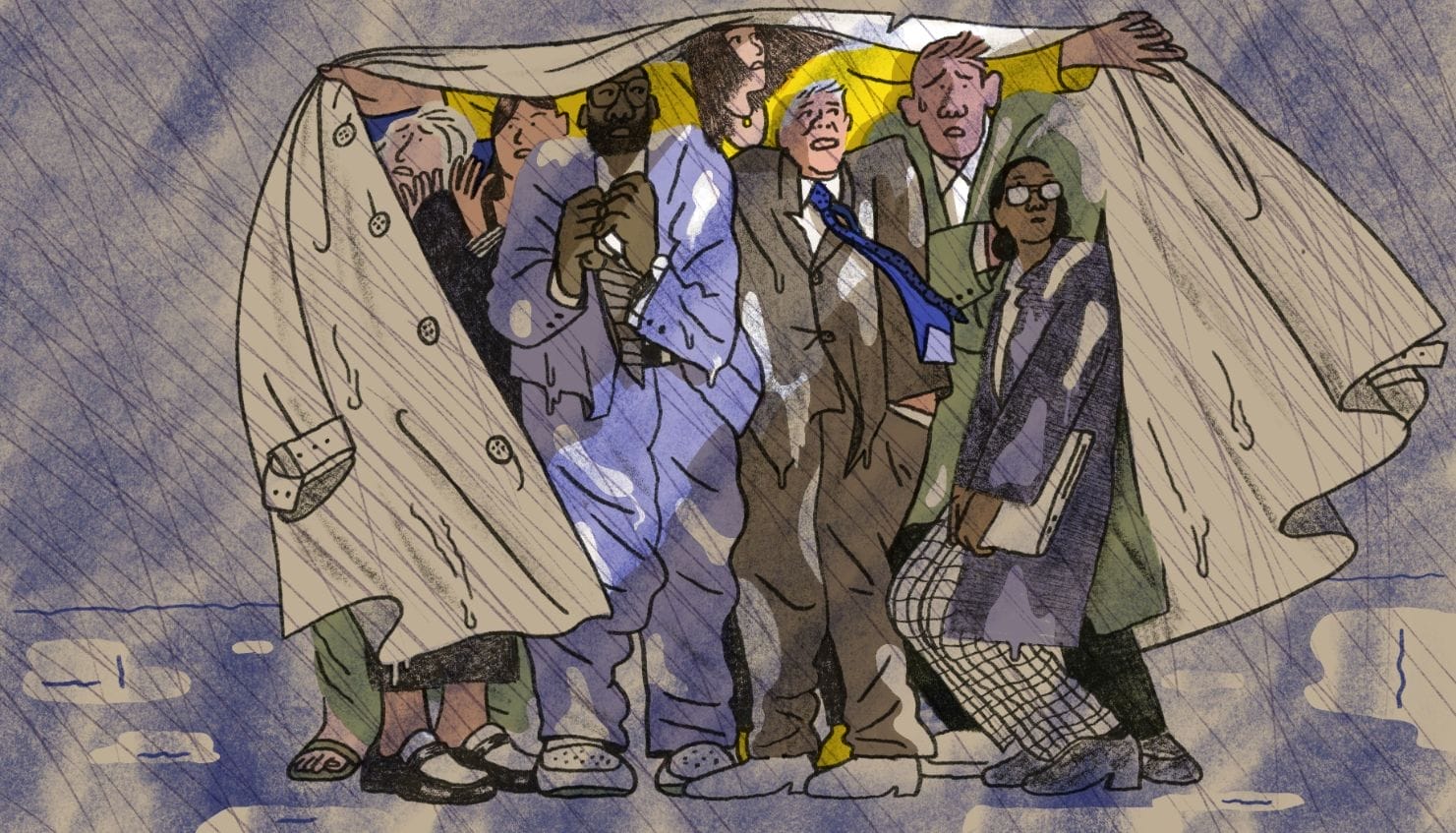The next crisis might be here now, or it might be around the corner. In The Prepared Leader: Emerge from Any Crisis More Resilient Than Before, two history-making experts in crisis leadership — Wharton Dean Erika H. James and Lynn Perry Wooten, president of Simmons University — argue that the time to prepare is always. In the following excerpt from their book, James and Wooten explain why “Prepared Leadership” should be central to every organization.
In 2017, the World Bank’s then-president, Jim Yong Kim, was asked to speak at the opening session of philanthropist Jeff Skoll’s World Forum. He had bad news to share. International support for the World Bank’s pandemic financing facility had effectively collapsed: Only two active donors were still on board.
This spoke to a pattern Kim had observed during his leadership. Immediately after a crisis, he said, there was a lull — a sudden drop-off in vigilance and caution across the international community that he described as “scary.” And it happened every time. Whenever a pandemic hit, the world’s leaders responded with alarm. As soon as it was over, the world immediately relaxed. Kim had a description for this behavior. He called it a “cycle of panic, neglect, panic, neglect.”
We believe that Kim perfectly captured the dynamic of what happens when human beings deal with things that are sudden, anomalous, and potentially devastating.
When the WHO sounded the alarm on March 11, 2020, COVID was already a full-fledged crisis. And even though the signs had been pointed out, alarm bells had been issued, and we had lived through previous viral outbreaks in recent memory, we had stopped thinking about them. Over a relatively short period of time, we allowed our critical surveillance and response mechanisms to atrophy. When COVID-19 hit, we’d dropped the ball, we’d dropped our guard, and we were unprepared. We were victims of the cycle of panic and neglect.
Breaking the Cycle
The next crisis is already heading your way.
We want you to understand that you need to be thinking about that crisis right now, even as the exigencies of everyday life consume much of your time and attention. We want you to think about the things that are stopping you from thinking about the unthinkable. And we want you to take several actions that help you break free from the cycle of panic and neglect. We want to help you be ready to lead through the next crisis, whatever it is, wherever it comes from, and however it manifests for you and your organization.

Wharton Dean Erika James and Simmons University President Lynn Perry Wooten, co-authors of The Prepared Leader
You might see this as a tall order. You might ask: Why should I plan for something that may not happen when there is enough in the here and now to occupy my leadership? And you might wonder: How can I even plan for something that I do not yet know or understand?
Planning for the unlikely and the unknowable is not only possible; it is something you can do with relative ease and facility. Preparing for a crisis is something you can do every day, in tandem with the regular things you already do as a leader. We aim to show you why an attitude of awareness is imperative and how to build that awareness into your leadership practice. And we will share with you a set of ideas, attitudes, skills, and actions you can adopt and prioritize that will bolster your leadership today and in more “normal” times while immensely enhancing your capacity to lead through a crisis tomorrow.
Even as you read this, another crisis is already brewing.
Perhaps you are managing a crisis right now. Or you have just emerged from a critical situation. Perhaps you are keen to stop and catch your breath in the wake of the pandemic, or you’re still grappling with the fallout as you navigate the end of the pandemic era. Our message to you, however, is that you should not let your guard down.
In 2020, we learned that because of the complex interconnectedness of things in our globalized world, crises can evolve with unimaginable speed and stealth. What starts in one corner of the planet can spread in days to another and another. And we’ve seen that we are imperfectly designed to understand and plan for these risks and manage their impact when they materialize. We have seen how easy it is to fall into the cycle of panic and neglect.
But there is another message we want to share with you: You can make a difference. There is enormous power and agency in your leadership before, during, and after the next crisis to reshape events, control outcomes, and build toward a positive outlook for yourself, your organization, and your stakeholders.
The Fourth Bottom Line
We are living in times of extraordinary change and uncertainty. However, countless risks and crises remain ahead — some foreseeable, others less so. Some we know about; others we do not. As technology, innovation, and our own questing curiosity power quantum advances in our evolution, there are concomitant risks that threaten our well-being and our very existence on this planet — among them the damage occurring to our environment and the climate changes this will incur. The stakes couldn’t be higher.
More than any generation of leaders before us, we have a serious responsibility to be better organizational citizens. We have a serious duty to service core social and environmental as well as financial priorities. Many of us already understand this in the context of a “triple bottom line” paradigm — that beyond the bottom line of profit, we have a duty of care to prioritize people and planet as well.
But as Prepared Leaders, we also have a duty to prepare our organizations and our people for the worst — to weather the storm and drive positive change in its aftermath. And we believe this means integrating a fourth bottom line — a fourth P — into this leadership paradigm. If we want to survive and thrive in the next crisis, that fourth bottom line needs to be Prepared Leadership. And it is as critical to the sustained success of your organization as are people, planet, and profit.
Prepared Leadership will be what determines your ability to deliver in terms of people, planet, and profit when the unthinkable happens. Without it, you will struggle to navigate the chaos, uncertainty, and potential for catastrophe that inevitably accompany crises. Prepared Leadership is what will ultimately determine your success, your viability, your longevity or failure when the next crisis strikes you and your organization.
It’s not enough to have a triple bottom line in our desperately uncertain world. You need to make Prepared Leadership your fourth bottom line — and you need to make it an urgent priority for your leadership and your organization today. It took COVID-19 less than two months to overrun our planet. It collapsed our economies, emptied our cities and our skies, closed our borders and our schools and colleges, broke our supply chains, and tipped our world into a recession. COVID-19 has left us with great uncertainty about our future. But it has also established absolute clarity about one thing: The unthinkable not only can, but does, happen. And it is likely to happen again.
Published as “The Importance of Prepared Leadership” in the Fall/Winter 2022 issue of Wharton Magazine.


























